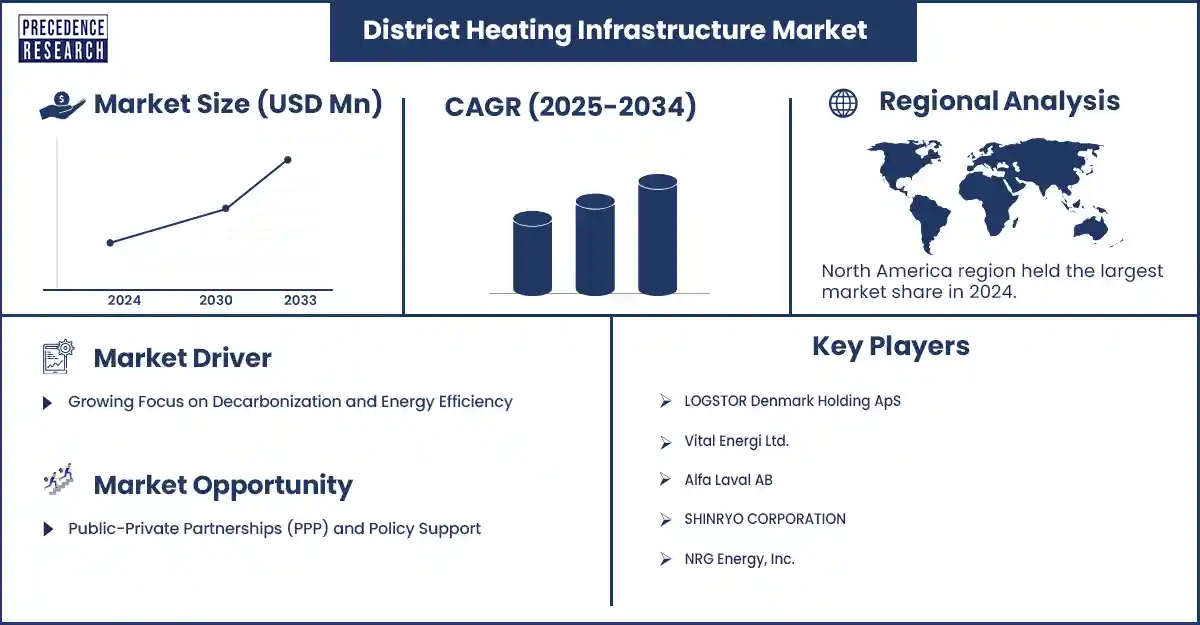November 2025
The global district heating infrastructure market is driving the global energy transition with efficient, low-carbon heating systems for sustainable urban development. This market is expanding due to mounting regulatory pressure for decarbonization, growing urbanization, the drive for energy efficiency, and increasing availability of waste heat and renewable thermal sources.

The growth of the district heating infrastructure market is driven by several interconnected factors. Governments in Europe, Asia, and North America are increasing carbon emission targets and heat decarbonization goals, pushing utilities and cities towards centralized, lower-carbon heating systems. Centralized heat networks offer economies of scale, resulting in lower unit heating costs compared to individual heating systems, especially in concentrated urban areas where district heating is more economically viable.
Urbanization and infill development concentrate heat demand, which centralized networks effectively address. Technological advancements are improving the efficiency, flexibility, and cost-effectiveness of modern district heating systems. Fluctuating energy prices and supply instability also favor systems that can integrate reasonably priced heat sources.
Europe registered dominance in the district heating infrastructure market in 2024. The region boasts mature infrastructure, strong regulatory frameworks, and high urban density, creating a fertile ground for district heating systems. Moreover, the long-standing use of these networks and the ongoing upgrades and decarbonization initiatives have solidified Europe's leading position. Additionally, government support for heat transition policies and a focus on integrating renewable energy sources into district heating systems are ensuring the continuous market expansion.
Asia Pacific is poised for significant growth in the market due to rapid urbanization and the development of large industrial parks. Increasing demand for heating solutions in cold northern regions, particularly in China, is also driving market growth. Moreover, many Asian countries are actively investing in extensive heat networks and renewable heat sources, fueling regional market growth.
| Report Attribute | Key Statistics |
| Quantitative Units | Revenue in USD million/billion, Volume in units |
| Largest Market | Europe |
| Base Year | 2024 |
| Regions Covered | North America, Europe, Asia-Pacific, Latin America, and the Middle East & Africa |
Get this report to explore global market size, share, CAGR, and trends, featuring detailed segmental analysis and an insightful competitive landscape overview @ https://www.precedenceresearch.com/sample/6958
You can place an order or ask any questions, please feel free to contact us at sales@precedenceresearch.com |+1 804 441 9344
November 2025
November 2025
April 2025
May 2025